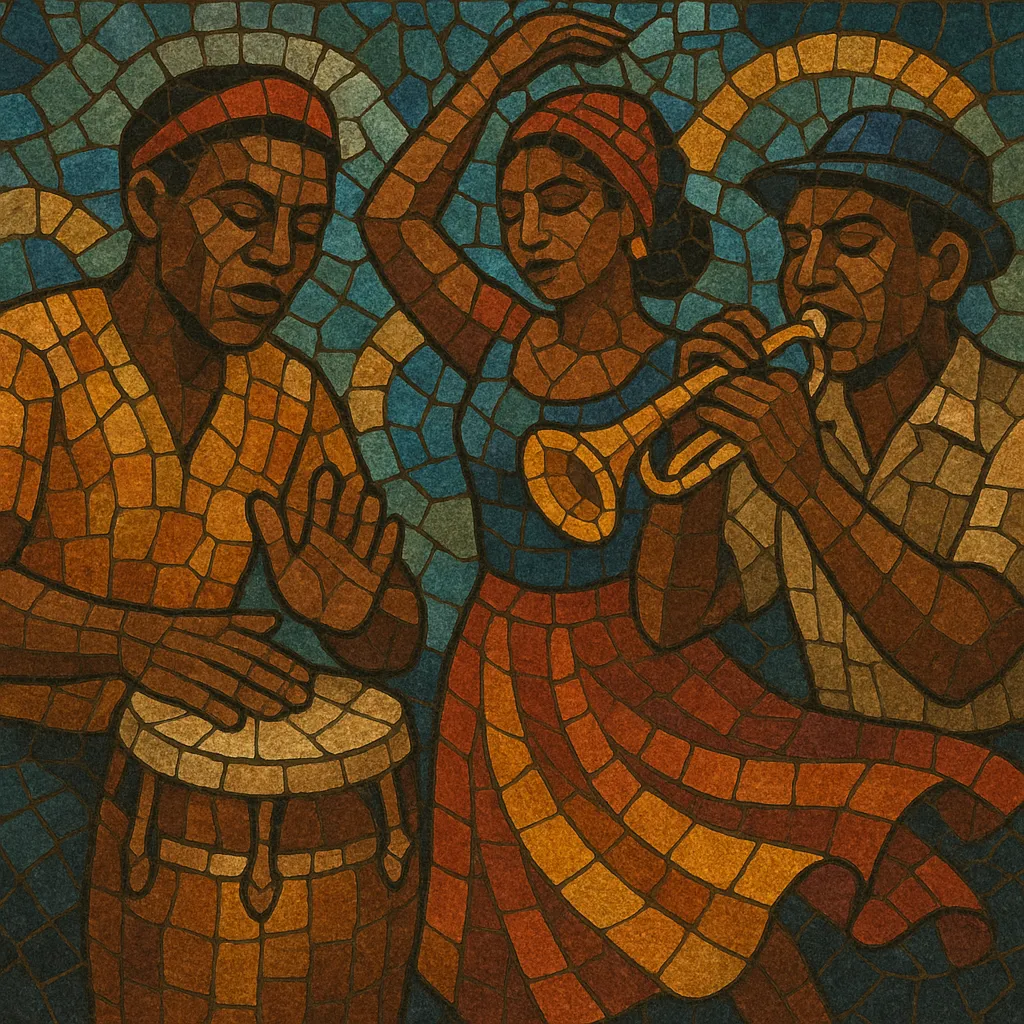Tumba is a dance-oriented Afro-Caribbean genre from Curaçao (and the wider Dutch Caribbean) characterized by driving, syncopated percussion, a catchy call-and-response chorus, and lyrics in Papiamentu.
Historically shaped by the encounter of Central/West African rhythms with European ballroom dances brought by colonial society, tumba sits at the heart of Curaçao’s Carnival culture. In modern practice it ranges from small percussion-and-guitar ensembles to full horn-led carnival bands, keeping a steady two-beat feel with a propulsive bass "tumbao" and highly singable refrains designed for mass participation.
Tumba emerged in Curaçao in the 1800s as African-descended communities blended Central/West African rhythmic practices with European social-dance forms. Early Creole composers such as members of the Palm family wrote instrumental tumba pieces that codified the genre’s dance feel while retaining African-derived syncopation. The term itself is tied to Bantu/West-Central African lexicons and broader Caribbean usages for drum- and dance-centered styles.
As urban music scenes grew in Willemstad, tumba became central to festivities and processions, especially around the pre-Lenten season. Ensembles expanded from guitar and hand drums to include brass, reeds, and later trap set, reflecting the influence of regional Caribbean dance-band idioms (e.g., calypso and Haitian méringue). The two-beat pulse, emphatic off-beats, and communal singing cemented tumba’s function as participatory dance music.
Curaçao’s annual Tumba Festival professionalized composition and performance, crowning a Tumba King/Queen and encouraging new repertoire each year. Arrangers incorporated modern harmony, horn voicings, and amplified rhythm sections, while maintaining Papiamentu lyrics and the genre’s signature call-and-response hooks.
Today, tumba remains a flagship sound of Curaçaoan identity. Artists fuse it with salsa band orchestration, pop-rock guitars, and jazz harmonies, but the core elements—syncopated percussion, two-beat drive, and crowd-ready choruses—continue to define the style in Carnival road performances and concert settings.


